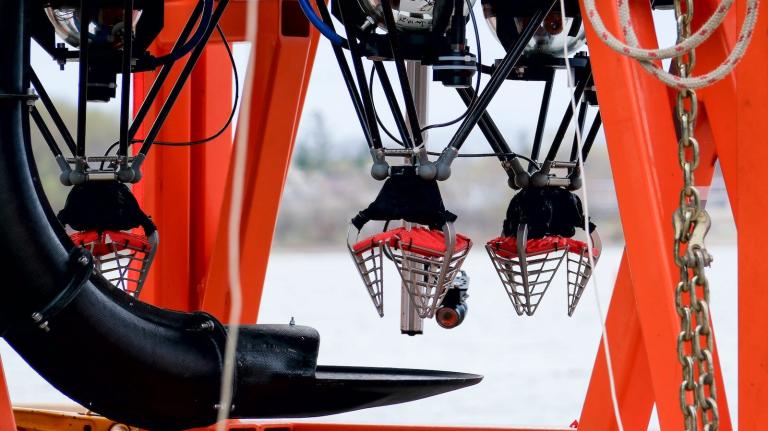
This piece was submitted by Kieran Suckling, executive director and co-founder of the Center for Biological Diversity.
The last known jaguar in the United States was killed Monday in what is increasingly looking like a bungled attempt to opportunistically radio-collar one of North America’s most endangered species. The euthanizing of Macho B on a stainless steel table in Phoenix, far from the rugged Arizona/Mexico borderlands he prowled for the past 15 years, is as predicable as it is infuriating. It caps a 40-year history of jaguar mismanagement by state and federal wildlife agencies.
The jaguar was listed as an endangered species in Mexico (but not the United States) in 1969. When the modern Endangered Species Act was created in 1973, the jaguar was listed as endangered in the U.S. as well. While this should have initiated the kind of long-term recovery programs that restored wolf and grizzly bear populations, it did not. The jaguar was ignored until 1979; then in response from a complaint by the state of Arizona, the U.S. Fish and Wildlife Service removed it from the endangered species list, citing a technical oversight which it promised to rectify forthwith.
The agency proposed to put the jaguar back on the endangered list in 1980, but let the proposal lapse because of its belief that “there were no resident populations of any of them in the U.S.” Poachers took advantage of the lapse in protection to shoot a jaguar in the Dos Cabezas Mountains east of Tucson in 1986.
The U.S. jaguar population eventually clawed its way back onto the endangered species list with the help of a Center for Biological Diversity lawsuit in 1997. The listing was pushed through against the bitter opposition of the Arizona Game and Fish Department which, invoking the usual blather about states’ rights and local control, also opposed preparation of a federal recovery plan, reintroduction, and the mapping and protection of “critical habitat” areas.
Supporting the state and contradicting the American Society of Mammalogists (which concluded that “Habitats for the jaguar in the United States, including Arizona and New Mexico, are vital to the long-term resilience and survival of the species, especially in response to ongoing climate change”) the Bush administration in 2008 declared it would neither prepare a federal recovery plan nor designate critical habitat. None were needed, the administration argued, because the jaguar’s “historic and current ranges occur entirely under the jurisdiction of other countries.”
What? The jaguar historically ranged from Monterey Bay, California, to the Appalachian Mountains, and has been repeatedly sighted (and sometimes killed) in recent years in southern Arizona and New Mexico. After describing the failure of recovery efforts in Central and South America, the administration also concluded that it is best to rely on these efforts rather than recover jaguars in the United States.
For the first time in the 35 year history of the Endangered Species Act, the U.S. Fish and Wildlife Service had declared it would not take action to recover a U.S. endangered species.
Which begs the question, why was Macho B captured and radio-tagged? It certainly was not done to implement a recovery plan or with the intent of reintroducing the U.S. jaguar population. While there is always information to be gleaned from radio-tagging an endangered species, there is also a risk. That risk is only worth it if carried out within the context of a coordinated, scientifically driven recovery plan. Not only is there no such plan, state and federal wildlife agencies fought a multi-year battle to prohibit it.
Macho B was an old jaguar and it’s possible his kidney was failing before he was captured. But Macho B was reported to be in fine health and full of vigor prior to and just after being snared. But if the kidney condition was pre-existing, the sedation could have lead to the animal’s death, as the doctor who performed the autopsy concluded: “If you sedate someone with drugs and the kidneys aren’t working, whether it’s a human or an animal, the sedative can have a negative effect … My guess is that sedation probably aggravated his kidneys.”
The Center for Biological Diversity is trying to generate 40,000 letters to the Obama administration to stop the jaguar killing and raise $40,000 to supports its active lawsuit to force development of a recovery plan and critical habitat protection. On March 23 we’ll be asking a federal judge to overturn the Bush-era decision to stop all jaguar protection efforts. And this entire year we’ll be pushing the Obama administration to step in to fix this historic wrong.
Click here to send a letter asking the Obama administration to reverse Bush’s policy and develop a federal recovery plan and critical habitat protection. Ask the president to withdraw all permits to kill jaguars and all permits to capture jaguars — until and unless a recovery plan is created that calls for capture as a necessary recovery tool.
And please join our “Protect and Recover the Jaguar” group on Facebook.
Suckling can be reached via e-mail at Kieran AT biologicaldiversity.org.
Further reading:
- Jaguar Macho B’s capture may have hastened his death (latimes.com, March 5)
- Jaguar’s death sparks protest at Fish & Wildlife (Tuscon Citizen, March 5)
- Officials euthanize AZ jaguar; he was ill (Arizona Daily Star, March 3)
- Ailing collared jaguar put down (Arizona Republic, March 3)


